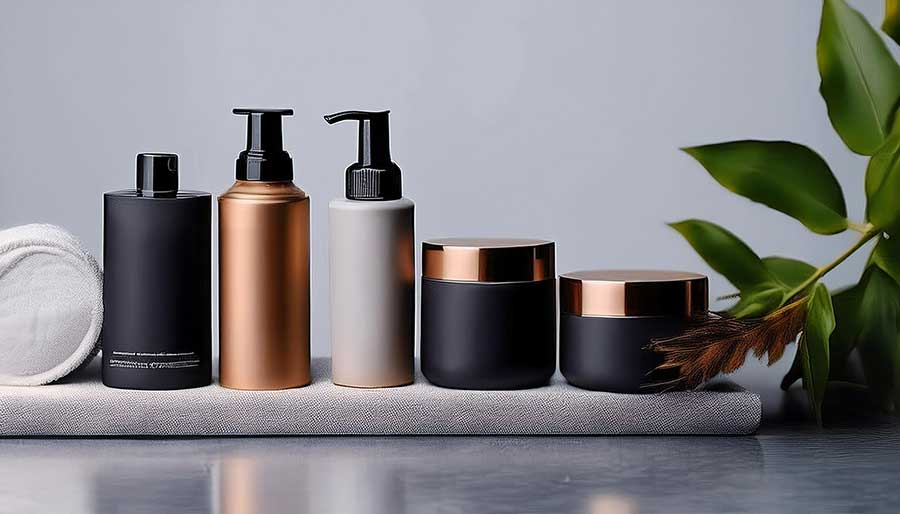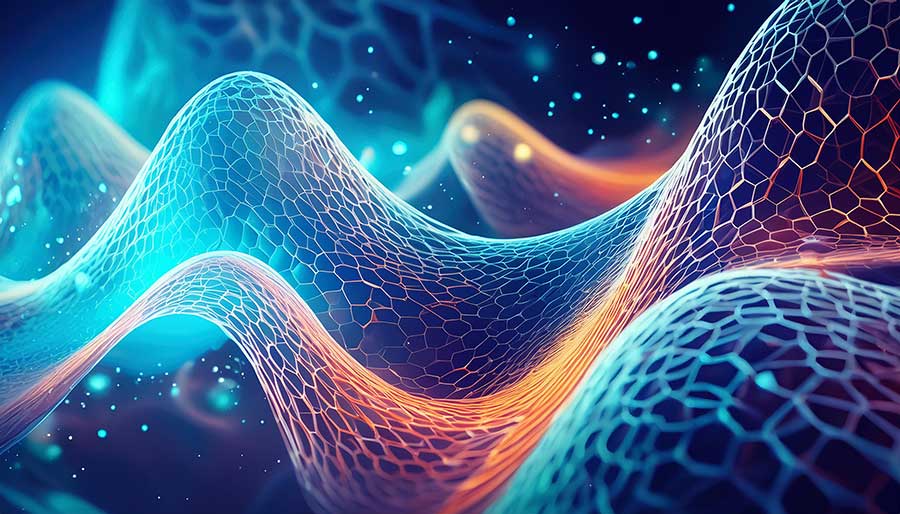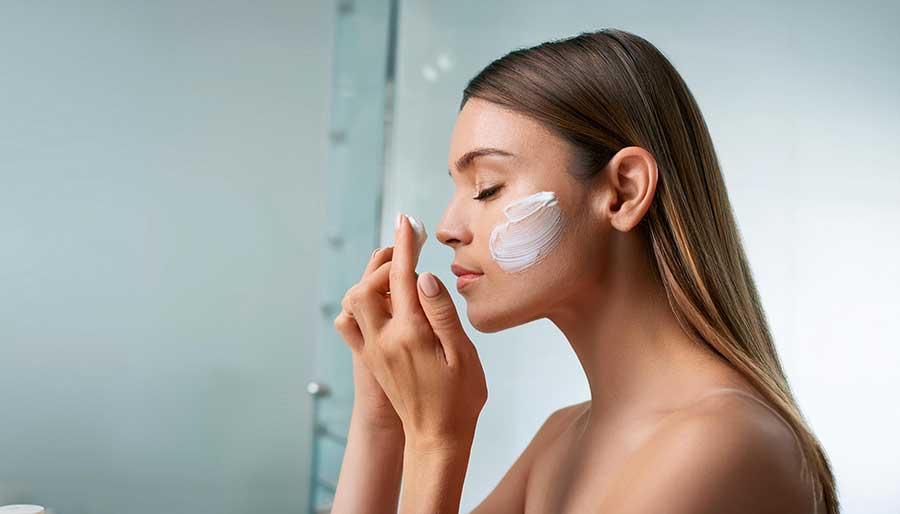
SKIN CARE INGREDIENTS / The 9 Categories
With the vast array of skincare ingredients and products that are on the market today, it can be challenging to work out which ones are right for your particular skin concerns. So we thought it might be useful to explore some of the most commonly used ingredients that are found in the main categories of skin care, how they work and why you might include them in to your routine.
We’ve broken it all down, so you can shop with confidence and tailor a skin care routine that addresses your unique concerns.
1. Cleansers:
The foundation of any skincare routine, cleansers are designed to remove dirt, oil, makeup, and impurities from the skin. They often contain surfactants and exfoliants to ensure a thorough cleanse and promote skin renewal.
- Surfactants: These agents help to remove dirt, oil, and impurities from the skin by reducing the surface tension, allowing water to wash them away more easily.
- Sodium Laureth Sulfate (SLES)
- Sodium Lauroamphoacetate –
- Cocamidopropyl Betaine
- Oils: Effectively dissolve and lift away impurities, makeup, sunscreen, and excess sebum without disrupting the skin’s natural lipid barrier. A couple of examples of oils used in cleansers:
- Jojoba oil
- Grapeseed oil
2. Exfoliants:
These ingredients remove dead skin cells from the surface of the skin. AHAs (like glycolic and lactic acid) and BHAs (like salicylic acid) promote cell turnover, improving skin texture and tone.
- Chemical Exfoliants: These exfoliants dissolve the bonds between dead skin cells, allowing them to be shed more easily:
- AHAs (Alpha Hydroxy Acids): Glycolic Acid, Lactic Acid
- BHAs (Beta Hydroxy Acids): Salicylic Acid
- Physical Exfoliants: These exfoliants use small particles or granules to manually slough off dead skin cells.
- Jojoba Beads, Pumice, Sugar, Salt,
- Enzymatic Exfoliants: These exfoliants use enzymes to break down the proteins in dead skin cells.
- Papain (from papaya), Bromelain (from pineapple)
3. Hydrators:
Essential for keeping the skin plump and hydrated, hydrators often feature humectants and natural moisturizing factors (NMFs). These ingredients attract and retain moisture in the skin, ensuring it stays supple and well-hydrated.
- Humectants: Similar to their role in moisturizers, humectants in hydrators attract and retain moisture in the skin, keeping it plump and hydrated.
- Hyaluronic Acid
- Glycerin
- Natural Moisturizing Factors (NMFs): These components mimic the skin’s natural moisturizing factors, helping to maintain hydration and improve the skin’s overall moisture balance.
- Amino Acids
- Urea
4. Moisturizers:
Essential for maintaining skin hydration, moisturizers come in various forms to cater to different skin types. They typically include humectants, emollients, and occlusives to attract moisture, soften the skin, and create a protective barrier to prevent moisture loss.
- Humectants: These substances attract water from the deeper layers of skin and the environment into the outer layer of the skin, helping to keep it hydrated.
- Hyaluronic Acid
- Glycerin
- Urea
- Emollients: These ingredients soften and smooth the skin by filling in the gaps between skin cells, providing a softer feel and improving barrier function.
- Jojoba Oil
- Squalane
- Shea Butter
- Occlusives: These agents form a protective barrier on the surface of the skin to prevent moisture loss and protect the skin from external irritants.
- Petrolatum
- Lanolin
- Mineral Oil
> Did you know there’s a difference between Moisturization and Hydration? See our guide
5. Anti-Aging:
Aimed at reducing the visible signs of aging, such as fine lines, wrinkles, and loss of elasticity, anti-aging products often feature retinoids, peptides, and antioxidants. These ingredients work to boost collagen production, improve skin texture, and protect against oxidative stress.
- Retinoids: These compounds promote cell turnover and increase collagen production, helping to reduce fine lines, wrinkles, and hyperpigmentation.
- Retinol
- Retinaldehyde
- Tretinoin
- Peptides: These short chains of amino acids help to stimulate collagen production and improve skin elasticity, reducing the appearance of wrinkles.
- Palmitoyl Pentapeptide-4 (Matrixyl)
- Copper Peptides
- Antioxidants: These ingredients neutralize free radicals, preventing oxidative damage to the skin and reducing signs of aging.
- Vitamin C (Ascorbic Acid)
- Vitamin E (Tocopherol)
- Ferulic Acid
- Coenzyme Q10 (CoQ10)
6. Sunscreens:
Vital for protecting the skin from harmful UV rays, sunscreens are available in chemical and physical forms. Chemical filters absorb UV radiation, while physical filters reflect it, both helping to prevent sunburn and long-term skin damage.
- Chemical Filters: These absorb UV radiation and convert it into heat, which is then released from the skin. They help to protect the skin from sunburn and long-term UV damage.
- Avobenzone
- Octocrylene
- Octinoxate
- Physical (Mineral) Filters: These ingredients sit on top of the skin and reflect UV radiation, providing a physical barrier against sun damage.
- Zinc Oxide
- Titanium Dioxide
7. Acne Treatments:
Targeting the causes of acne, such as bacteria and inflammation, acne treatments often contain antimicrobials and anti-inflammatories. These ingredients help to reduce breakouts, clear clogged pores, and calm irritated skin.
- Antimicrobials: These ingredients help to kill or inhibit the growth of acne-causing bacteria, reducing the occurrence of breakouts.
- Benzoyl Peroxide
- Salicylic Acid
- Anti-Inflammatories: These agents reduce inflammation and redness associated with acne, helping to calm irritated skin.
- Niacinamide (a type of Vitamin B3)
- Tea Tree Oil
8. Brightening Agents:
Designed to improve skin tone and reduce hyperpigmentation, brightening agents typically include tyrosinase inhibitors and exfoliants. These ingredients work to fade dark spots, even out skin tone, and promote a radiant complexion.
- Tyrosinase Inhibitors: These substances inhibit the enzyme tyrosinase, which is involved in the production of melanin, helping to reduce hyperpigmentation and even out skin tone.
- Vitamin C (Ascorbic Acid)
- Hydroquinone
- Kojic Acid
- Exfoliants: In addition to removing dead skin cells, some exfoliants help to brighten the skin by promoting the shedding of pigmented cells and improving cell turnover.
- Glycolic Acid
- Lactic Acid
- Azelaic Acid
9. Soothing Agents:
For those with sensitive or irritated skin, soothing agents help to calm inflammation and support the skin’s barrier function. These products often contain anti-inflammatories and barrier repair agents to alleviate redness and irritation while maintaining skin health.
- Anti-Inflammatories: These ingredients help to calm and reduce skin inflammation, alleviating redness, irritation, and discomfort.
- Aloe Vera
- Probiotics
- Chamomile
- Centella Asiatica (Cica)
- Barrier Repair Agents: Help to restore and maintain the skin’s natural barrier function, protecting it from environmental damage and preventing moisture loss.
- Ceramides
- Fatty Acids
- Cholesterol
- Prebiotics
References
1. INCI – standardized and internationally accepted names used in the declaration of ingredients on cosmetic and personal care products.
2.FDA Gove – Cosmetic Ingredients Fact Sheet


